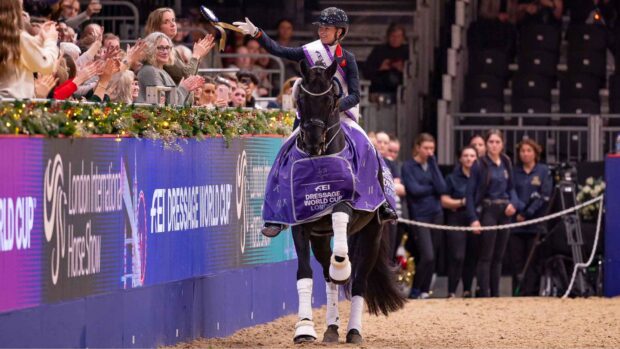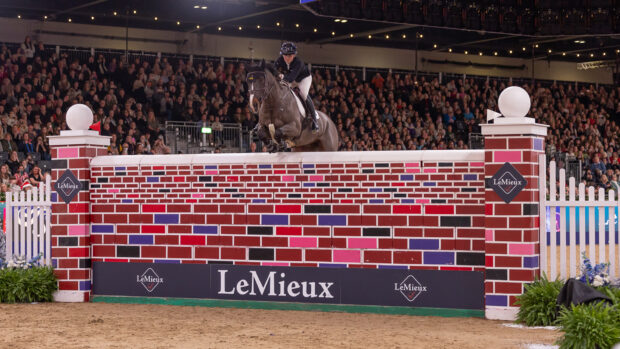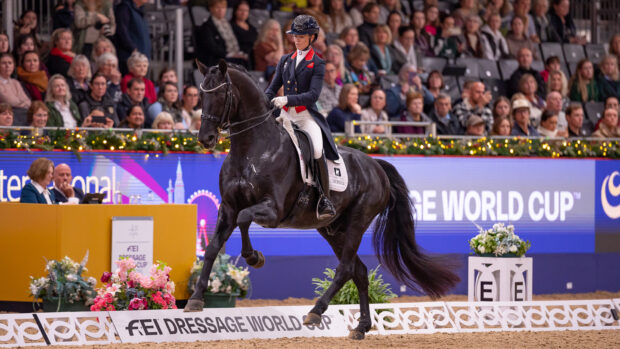The Household Cavalry was formed by the union of the two most senior regiments in the British Army, the Life Guards and the Blues and Royals, and is divided into the Household Cavalry Regiment and the Household Cavalry Mounted Regiment. Both regiments have a long and distinguished history; the Life Guards were formed as the bodyguard of King Charles II while in exile on the continent in the 1600s, eventually escorting him back to England for the restoration in 1660.
The Blues and Royals was formed in 1969 by the amalgamation of the Royal Horse Guards and the Royal Dragoons (1st Dragoons), both of which have their origins in the mid-17th Century. The blue livery, which gives rise to part of the name, was adopted while under the command of the Earl of Oxford and became known as Oxford Blues. Now, the Blues and Royals have blue tunics, red plumes and black sheepskins, while the Life Guards have red tunics, white plumes in the helmets and white sheepskins over the saddles.
After World War II, a mounted squadron was formed from each regiment to be stationed at Hyde Park Barracks in London to carry out ceremonial duties, now known as the Household Cavalry Mounted Regiment. These duties include the daily King’s Life Guard, which provides mounted and dismounted sentries at Horse Guards, the official entrance to St James’s and Buckingham Palace.
While the Household Cavalry Regiment is the operational unit, known as armoured reconnaissance experts, the Mounted Regiment is the regiment’s ceremonial face and conducts mounted State and public duties in London. These include Trooping the Colour, the State Opening of Parliament and visits by foreign heads of state, as well as events across the UK and abroad to represent the monarch and the nation.
Those joining the regiment are known as mounted dutymen, and are trained over 20 weeks to ride and look after a horse, as well as prepare for parade. Both officers and soldiers normally alternate between the operational and ceremonial regiments to provide a varied career.
The Household Cavalry horses
The horses of the Household Cavalry, known as Cavalry Blacks, have been guarding the royal family and taking part in ceremonial occasions since the restoration of King Charles II in 1660.
Traditionally Irish-bred with a mixture of thoroughbred and Irish Draught breeding, the ideal Cavalry Black is at least 16.2hh (officers’ chargers should be at least 17hh and preferably completely black with no white markings) with enough bone and the correct conformation and movement to carry a soldier in full ceremonial gear and tack.
Young horses joining the regiment are known as remounts and undergo a thorough training programme at the Household Cavalry Training Wing in Windsor, starting with being backed to ride and learning the basic paces before being introduced to road work. Then begins the preparation for parade life, with some ceremonial tack being introduced to allow them to get used to the feel of it. Once this is complete, the horses are moved to the Knightsbridge barracks for the last stages of training.
Like drum horses, the Cavalry Blacks are given an official name once their training is complete. Famous former Cavalry Black horses include Sefton, who survived terrible injuries caused by an IRA bomb in Hyde Park, and Thomas, so known for nuzzling his handlers that new recruits were asked “Have you kissed Thomas?”. Thomas who went on to serve for 19 years at events, including The Queen’s Gold and Diamond Jubilees in 2002 and 2012, the Royal Wedding in 2011, and the London 2012 Olympics, before being retired in 2012, aged 22.
Every year, the horses are given a break from their city duties and move to Holkham in Norfolk, where they are exercised on the beach, as well as enjoying time as grass. This isn’t just a holiday, however; the time in Norfolk is used to practice riding and military skills, as well as strengthen the bond between the soldiers and their horses.
You might also be interested in:

From mud monsters to fit for The King: Army horses return to London after Christmas break

Heaven for horses: Household Cavalry and King’s Troop mounts buck, roll and gallop on Christmas holidays

Household Cavalry enjoy a blast on Holkham beach
The ride on Holkham beach is one of the highlights of the Household Cavalry Mounted Regiment’s annual north Norfolk training

Subscribe to Horse & Hound magazine today – and enjoy unlimited website access all year round
Horse & Hound magazine, out every Thursday, is packed with all the latest news and reports, as well as interviews, specials, nostalgia, vet and training advice. Find how you can enjoy the magazine delivered to your door every week, plus options to upgrade your subscription to access our online service that brings you breaking news and reports as well as other benefits.




